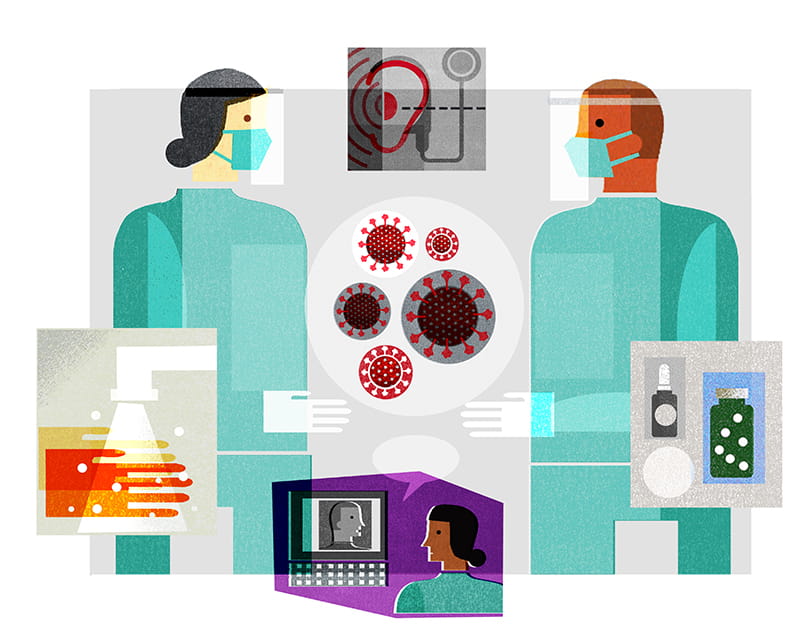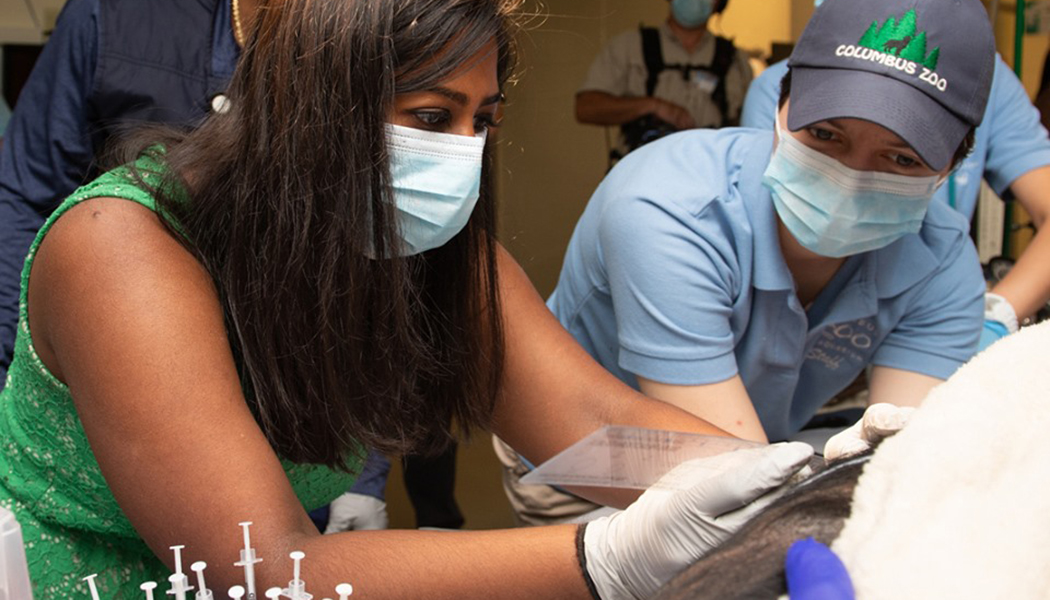
2020 Annual Report
 When Unga, a 26-year-old bonobo at the Columbus Zoo, experienced hives and facial swelling, the zoo’s veterinary team turned to The Ohio State University Wexner Medical Center for help.
When Unga, a 26-year-old bonobo at the Columbus Zoo, experienced hives and facial swelling, the zoo’s veterinary team turned to The Ohio State University Wexner Medical Center for help.
Specifically, they sought the help of Rekha Raveendran, MD, allergist and assistant professor in the Ohio State Wexner Medical Center Department of Otolaryngology – Head and Neck Surgery.
“When I saw a message in my email inbox about a bonobo with a suspected food allergy, I immediately assumed it was spam,” Dr. Raveendran says. “But the message was so detailed, it actually sounded real. I couldn’t help but be intrigued.”
The zoo team was concerned that a nutrient-fortified biscuit in Unga’s diet was the cause of her symptoms, but they couldn’t be sure. The team had done some testing on Unga, but because of the pygmy chimpanzee’s close relationship to humans, they wanted a human allergist’s perspective.
Dr. Raveendran, a clinical assistant professor at the College of Medicine called the zoo that evening to discuss symptoms.
She learned that, in addition to allergy-like symptoms, Unga was also experiencing gastrointestinal problems, for which the zoo team sought the assistance of another Ohio State Wexner Medical Center physician, gastroenterologist Philip Hart, MD, who is a clinical assistant professor at the College of Medicine.
In July 2019, Drs. Raveendran and Hart made their way to the Columbus Zoo to conduct a series of tests with Unga — all of which were caught on film by National Geographic for its “Secrets at the Zoo” series. The next season is set to air in spring 2020.
The zoo’s request was a first for Dr. Raveendran, so she wasn’t sure what to expect.
“When we do skin testing for allergies in humans, we test the mast cells in the skin against specific allergens. We are able to see the reactions we need to see with small skin pricks on the backs of the arms,” Dr. Raveendran says. “Mast cell distribution in bonobos isn’t as straightforward.”
To account for any differences they may encounter, the team brought along standard human skin-prick tests and intradermal needle test kits. The intradermal tests, though not commonly used for food allergy testing in humans, go under the skin.
“We brought the intradermal tests along in case Unga didn’t respond well to standard skin-prick testing,” Dr. Raveendran says. “We were glad we had them.”
Dr. Raveendran and Ohio State Wexner Medical Center nurse Arnold Gillam did close to 70 intradermal tests on Unga to check for both food and environmental allergies. Because these tests aren’t standard for food allergy testing, the team had to develop their own food-allergen injection concentrations.
What they found was that Unga had some reaction to soy and corn. They were also able to re-confirm the zoo’s own previous findings that Unga had sensitivity to mold.
Following the testing by the Ohio State Wexner Medical Center team, the zoo removed the biscuit from Unga’s diet. They also made improvements to her living quarters to improve air quality. Despite these changes, Unga’s hives continued.
“We weren’t expecting to see this,” Dr. Raveendran says. “But with this knowledge, the zoo team feels that Unga’s problem may be more of an immune regulation or hormonal issue.”
Dr. Raveendran remains in touch with the Columbus Zoo team as they work together to help Unga. She says it’s important for the sake of innovation to form these kinds of relationships.
“By keeping an open line of communication, we can talk to one another about things that might be less common and come up with new and innovative ways of doing things,” Dr. Raveendran says.